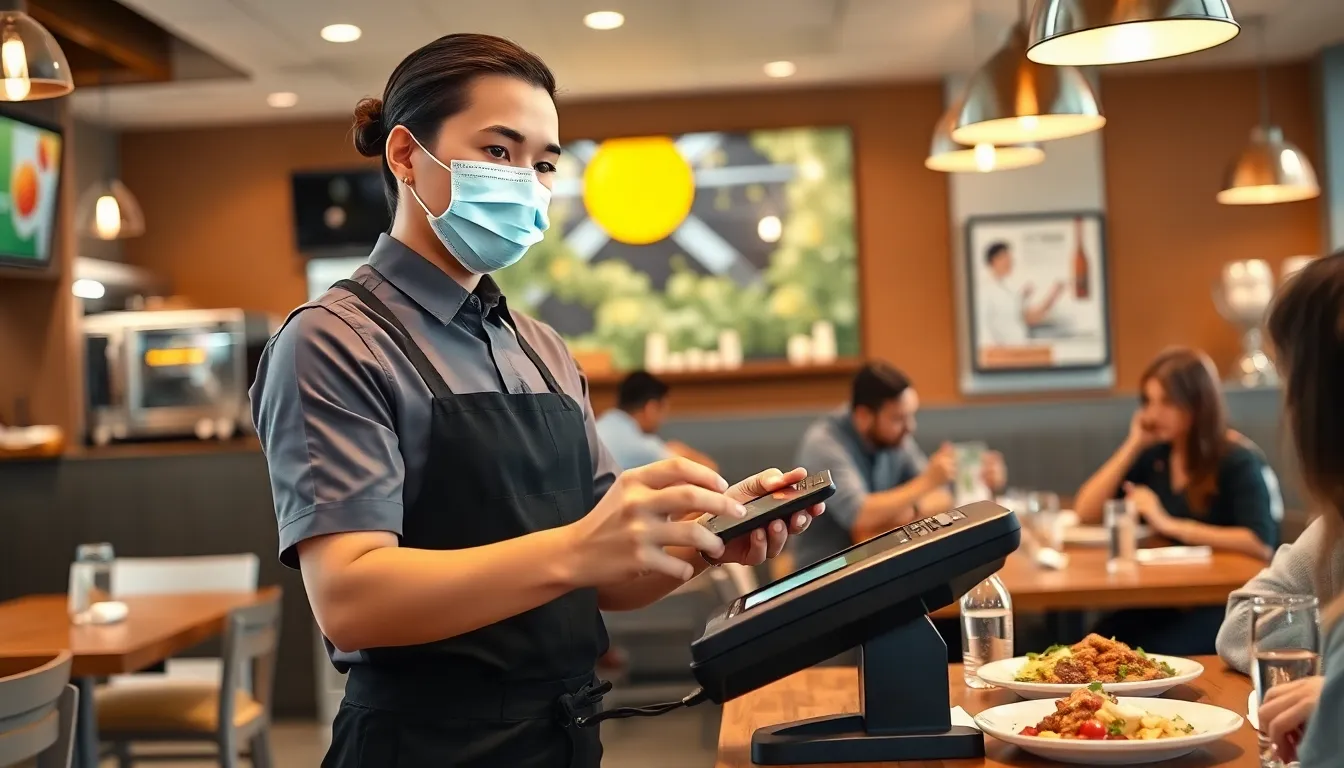In the fast-paced world of food service, trends come and go quicker than a chef can toss a salad. From plant-based menus to tech-savvy dining experiences, the industry is evolving at lightning speed. Keeping up with these trends isn’t just a good idea; it’s essential for staying relevant and competitive.
Table of Contents
ToggleOverview of Food Service Trends
Adapting to the latest food service trends is crucial for industry professionals. Plant-based menus are gaining popularity, driven by health-conscious consumers and environmental concerns. Technology is also reshaping dining experiences, with advancements like mobile ordering, contactless payments, and online reservations becoming commonplace.
Sustainability practices feature prominently, with diners increasingly favoring establishments that showcase local ingredients and eco-friendly packaging. Ghost kitchens have emerged as a strategic response to rising food delivery demand, allowing operators to maximize resources without the overhead of traditional dining spaces.
Health and wellness considerations shape menu offerings as consumers seek options that cater to dietary restrictions and promote well-being. Innovations like meal kits and subscription services also attract attention, providing convenience and variety for busy lifestyles.
Increased focus on experiential dining enhances customer engagement. Restaurants are designing immersive experiences that pique interest and encourage social sharing. Interactive elements like chef’s tables and tasting menus add a layer of exclusivity.
Emphasis on transparency in ingredient sourcing builds trust with customers. Sharing details about where food comes from fosters a deeper connection between diners and their meals. Loyalty programs and personalized marketing strategies enhance customer retention while ensuring a tailored experience.
Food service trends are not just fleeting; they reflect shifting societal values and consumer expectations. Staying informed about these dynamics enables food service professionals to thrive amid constant change.
Technology in Food Service

Technology continues to transform the food service industry, emphasizing efficiency and customer convenience. These advancements enhance the dining experience while also streamlining operations.
Online Ordering Solutions
Online ordering solutions streamline the purchasing process for customers. Consumers prefer using apps and websites for browse menus and placing orders. Restaurants benefit from reduced wait times and improved table turnover. Some platforms integrate with kitchen display systems, ensuring efficient order management. For instance, operators can leverage third-party delivery services, allowing them to reach a broader audience without additional overhead. These solutions cater to the increasing demand for takeout and delivery options, accommodating consumer preferences for convenience.
Contactless Payment Systems
Contactless payment systems enhance the overall dining experience. Many establishments have adopted NFC-enabled terminals to facilitate seamless transactions. Guests appreciate the speed and safety associated with contactless payments, reducing physical contact during the checkout process. Operators report increased transaction efficiency while minimizing cash handling. Implementing mobile wallet options attracts tech-savvy customers, further supporting the trend toward digitalization. These systems also encourage higher spending by simplifying the tipping process, showcasing their dual benefit for both diners and staff.
Sustainability in Food Service
Sustainability plays a vital role in today’s food service landscape. Many establishments emphasize eco-friendly operations to attract conscientious consumers.
Farm-to-Table Practices
Farm-to-table practices promote freshness and reduce carbon footprints. Restaurants sourcing ingredients from local farms contribute to local economies and support sustainable agriculture. Consumers increasingly seek establishments that highlight these practices on menus. For instance, many diners appreciate knowing their food comes from nearby producers, enhancing their dining experience. Locally sourced ingredients often translate to better flavor profiles, fostering culinary creativity. Many chefs develop relationships with farmers, ensuring quality and consistency while reducing transportation impacts.
Eco-Friendly Packaging
Eco-friendly packaging has gained traction as consumers become more environmentally aware. Restaurants utilize biodegradable materials, enhancing their sustainability efforts. Many establishments shift away from single-use plastics in favor of compostable or recyclable options. This transition reflects a growing consumer preference for sustainable practices. For example, food containers made from plant-based materials minimize environmental impact while maintaining functionality. Additionally, engaging customers with information about packaging choices can bolster brand loyalty and encourage similar behaviors.
Health and Wellness Trends
Health and wellness are increasingly important in the food service industry. Consumers expect dining experiences to align with their health goals and lifestyle choices.
Nutritional Transparency
Consumers demand nutritional information on menus. Many diners want to know the calorie count, ingredient sourcing, and allergens in their meals. Establishments that prioritize transparency build trust with customers. As a result, consumers feel more empowered to make informed choices about their food. Chefs and operators can use ingredient sourcing to highlight quality and sustainability, creating a stronger connection between the meal and its origin. Data from a recent survey shows that 70% of diners prefer restaurants providing detailed nutritional information. This focus can enhance customer loyalty and satisfaction.
Plant-Based Menu Options
Plant-based offerings continue to rise in popularity. Many consumers choose plant-based meals for health benefits and environmental concerns. Restaurants expanding their vegetarian and vegan options cater to this growing demographic. Creative, flavorful dishes featuring legumes, grains, and vegetables attract a broader audience. Studies indicate that 60% of consumers incorporate more plant-based meals into their diets. Consequently, operators can experiment with innovative culinary techniques to enhance flavors and presentation. By positioning themselves as health-conscious establishments, restaurants not only satisfy current trends but also promote longer-term customer retention.
Customer Experience Innovations
Customer experience innovations drive engagement and satisfaction in the food service industry.
Personalization and Customization
Personalization enhances customer loyalty as diners seek tailored experiences. Customization options, like build-your-own meals, allow consumers to select ingredients to meet individual tastes and dietary preferences. Establishments leveraging data analytics can anticipate trends and adjust offerings proactively. For instance, restaurants utilizing customer feedback to refine their menus can create a sense of partnership with their audience. Additionally, personalized marketing strategies, such as targeted promotions based on past orders, significantly boost customer interaction. Consumers report a greater likelihood of returning when they feel their preferences are acknowledged.
Social Media Engagement
Social media engagement plays a crucial role in shaping customer perceptions. Platforms like Instagram and Facebook serve as powerful tools for restaurants to showcase their dishes visually. Engaging posts highlighting special promotions or behind-the-scenes content foster a connection with the audience. Additionally, user-generated content, such as customers sharing their dining experiences, builds authenticity around the brand. Restaurants responding promptly to comments and messages enhance their reputation for customer service. Engaging followers through interactive content, like polls or contests, encourages increased participation and brand loyalty. These strategies create a vibrant online community that drives foot traffic and encourages repeat visits.
Navigating the evolving landscape of the food service industry requires agility and foresight. As trends shift toward plant-based options and technology-driven experiences, professionals must embrace innovation to meet consumer demands. Sustainability practices and health-conscious offerings are no longer optional; they’re essential for attracting today’s discerning diners.
The rise of ghost kitchens and personalized dining experiences highlights the importance of efficiency and customer engagement. By leveraging data analytics and social media, establishments can foster deeper connections with their audience. Staying ahead of these trends not only enhances customer satisfaction but also solidifies a restaurant’s position in a competitive market. Adapting to these changes will ultimately define success in the ever-changing food service landscape.




